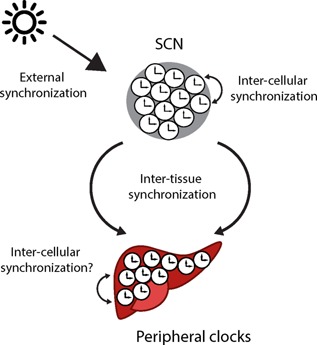Figure 4.

Types of synchronization within the circadian timing system. Several synchronization mechanisms are required to ensure internal and external synchrony of the numerous cellular clocks present in higher organisms. Single cells within a tissue have to be synchronized with each other (inter‐cellular organization) to allow synchronized circadian output of a particular peripheral tissue clock. In addition, different tissue clocks have to be synchronized with each other, to maintain systemic internal synchrony. Lastly, the entire organism has to be synchronized to the external 24‐hour LD cycle to ensure temporal adaptation (external synchronization).
